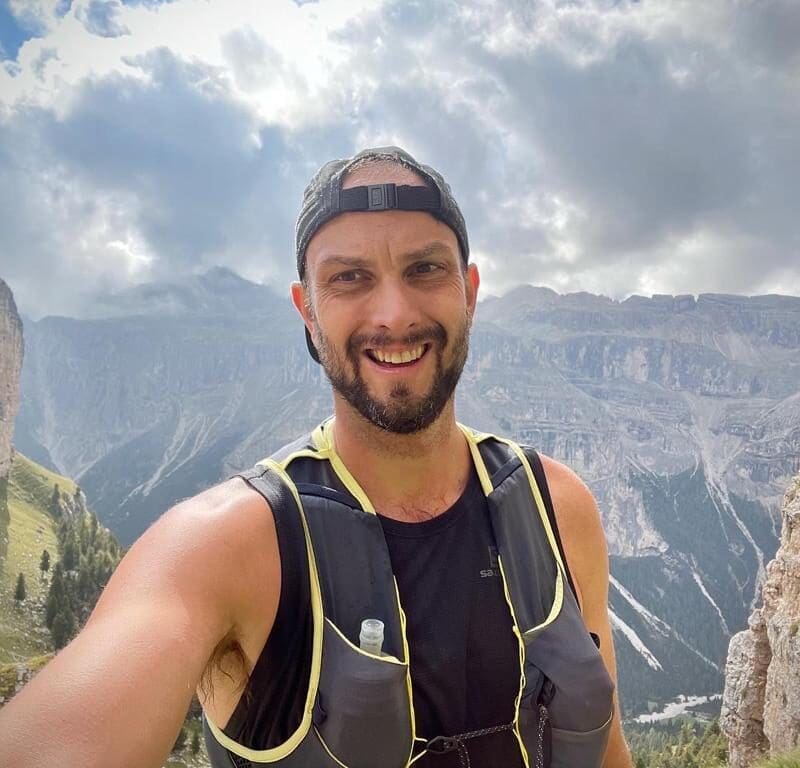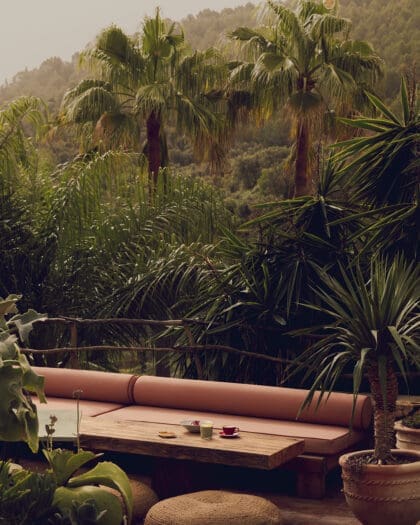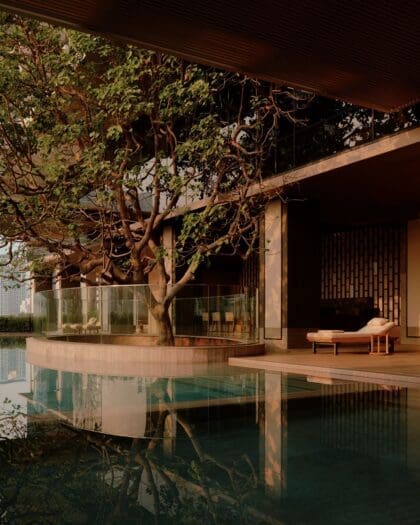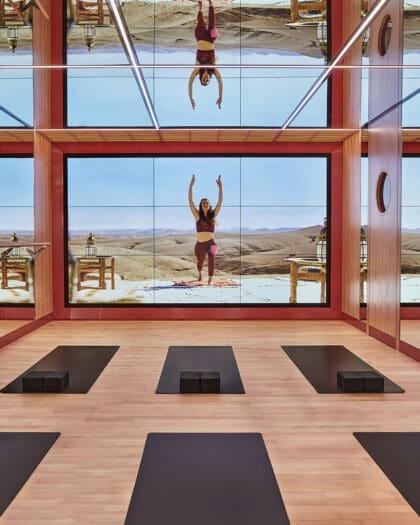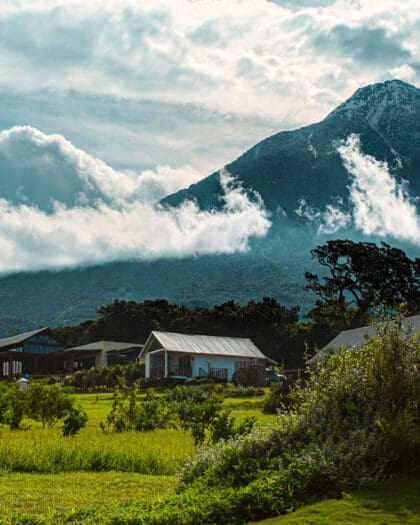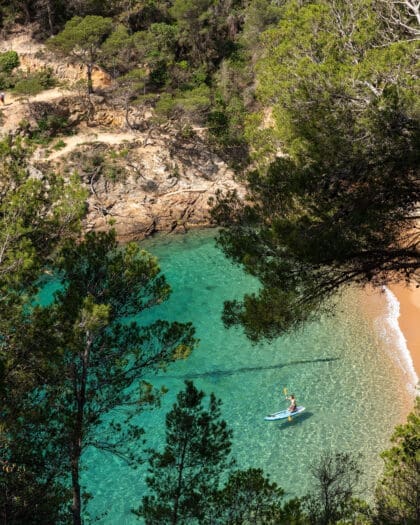
In Motion: Running in the footsteps of Friedrich Nietzsche in Nice
Contemplating the art of suffering while running along the Chemin de Nietzsche in the Côte d’Azur’s medieval hilltop villages

Rendered dark black by the July sunrise, cliff swallows form airborne chevrons that swoop and invert between the pink facades of Rue Rossini in Nice, where German philosopher Friedrich Nietzsche summered between 1893 and 1897.
The southern French city marked an important era of his life: following the messy conclusion of friendships with fellow philosopher Arthur Schopenhauer and composer Richard Wagner, it was here that Nietzsche first read Dostoyevsky and finished two of his most important works: Thus Spoke Tharathustra and Beyond Good and Evil.
He also spent significant time in the medieval Moorish village of Èze, where his favourite walk was named for him. Disembarking from the train at Èze Bord de Mer, a 20-minute train journey from Nice, the boxy station looks like it could have been transposed from the pages of The Story of Babar; coral-hued, trimmed with white, and roofed with terracotta tiles.
Across the street, the trailhead for the Chemin de Nietzsche is announced by a placard noting that Èze itself is just over two kilometres away. However, the trail features 400 metres of vertical gain. In other words, quite steep, potentially a sufferfest.

When it comes to philosophies, Schopenhauer’s was more in line with the Buddhists or Ancient Greek hedonists – suffering was a phenomenon to be mitigated and managed – whereas Nietzsche held that it had creative, transformative properties, and needed to be harnessed in order to live a truly full and free life.
Nietzsche writes: ‘In man creature and creator are united: in man there is material, fragment, excess, clay, dirt, nonsense, chaos; but there is also the creator, the sculptor, the hardness of the hammer, the divinity of the spectator, and the seventh day – do you understand this contrast? The body must be fashioned, bruised, forged, stretched, roasted, and refined – it is meant to suffer.’
Taking this under consideration, I feel more stoic about the mounting discomfort as I run up the mountain past hydrangeas in full bloom, flowering jacarandas and sere auburn soil. A crumbling concrete track hemmed with ancient stone walls degrades into packed dirt and worn rock. Soaring cliffs below Èze gleam where the sun penetrates through, and, looking back over the mega-yachts moored in the bay south of Villefranche, patches of otherworldly turquoise catch early morning rays.
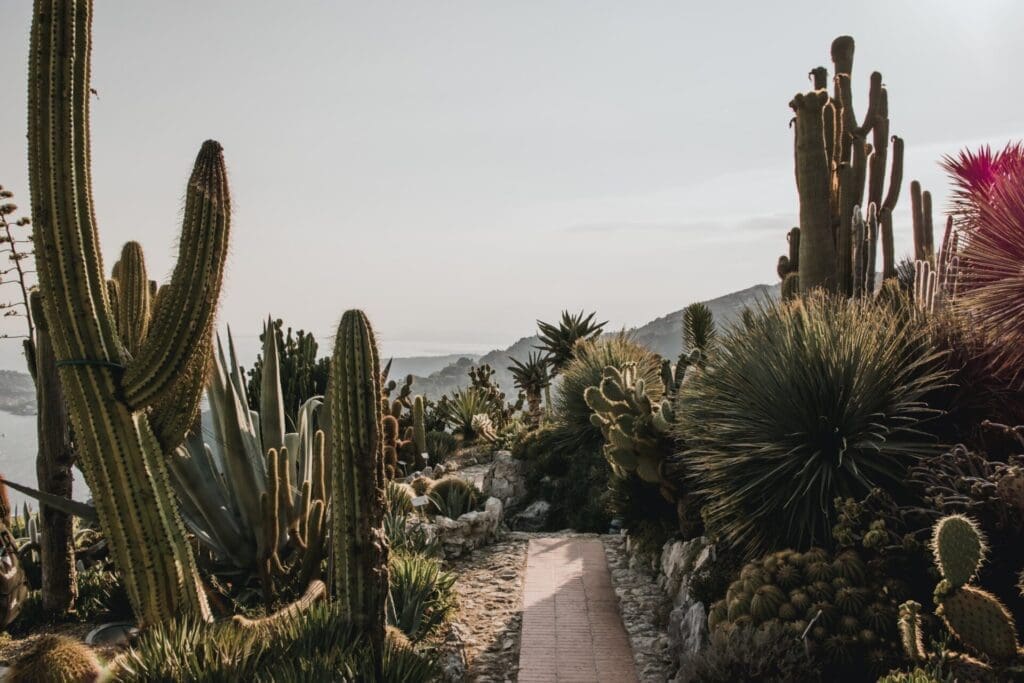
I jog up a gorge, its white sides interrupted with Mediterranean pine and plane trees that cling like limpets to its runoff channels. White monoliths of porous limestone loom on all sides. The trail switches back again and again, getting steeper toward the top. Turning a corner, an outlook comes into view. Flanked by olive trees, it looks across a gulch onto a terraced garden that would give Babylon a run for its money, with water features, fountains and sculptures of satyrs and giraffes.
A sign indicates the upwards terminus of the Chemin de Nietzsche, claiming that ‘Nietzsche had always been attracted to Mediterranean countries and, well before Albert Camus, he went as far as talking of “A Midi (Southern Way) of thinking.” Light and precision of lines, signs of a clear spirit, were preferable to him than the northern fog of colder countries.’

It’s taken about twenty minutes to complete the trail, so I run aimlessly through the labyrinthine streets of Èze, still shuttered in the early morning. I get the sense that I’m aggravating the many porters and shop owners setting up for the tourist rush and, on a whim, decide to leave the village for the next highest point.
There’s a vast chasm between Èze and Mont Bastide, spanned by a bridge and busy two-lane motorway that disappears into a narrow cavernous tunnel. Crossing the road is one of the most perilous moments of the morning. The ascent up the mountain is less loved than the Chemin de Nietzsche, reflected in the unkept, loose nature of the trail’s surface. Now that the sun is out in force, the mercury has shot up to 35 degrees. My stomach turns over itself like an unhappy bivalve. Fainting has become a very real concern.
Nietzsche wrote that suffering ‘was a tool and invention in which you could fashion a pair of wings.’ The Daedalus reference feels on point. Visions arrive of his son Icarus flirting with immolation in powerful solar heat.
Dizzy and thirsty, I top out above the trees in the scrubby clearing leading to Mont Bastide’s 570-metre summit. I’m looking forward to the descent, its lines visible on the western shoulder of the mountain, down the centre of a col, on a faint pathway.
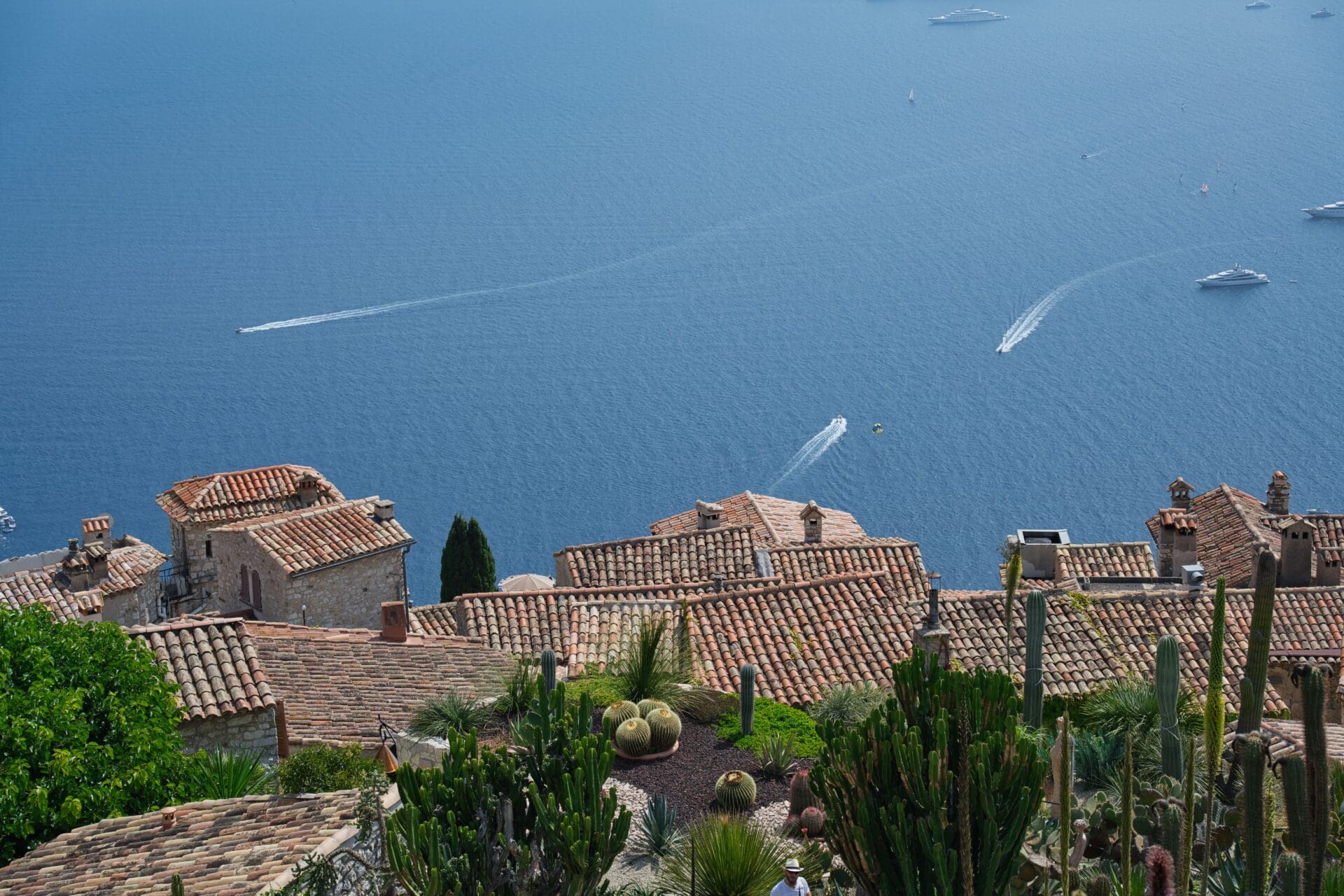
At its very best, running feels like dance. The swinging of legs and arms provides a metronome that enables your torso and head to pursue moments of ecstasy and oblivion. When running down a steep pitch – such as the slopes that crest forcefully from the Provençal hills to the Mediterranean – it can be a danse macabre.
Though your body may feel strong and in control, there is always the spectre of disaster. It can be difficult to follow a rough trail moving at speed. I come off it and lose my footing on a chute of slick limestone scree and go for a ride, sliding a dozen feet down the hip of the mountain. Moments later I’m back on a decent path.
There’s an aspect of fell running that defies belief. Moving quickly downhill, the fact of your feet finding purchase when the terrain flows past at a rate your conscious mind cannot compute can feel dreamlike.
With lives so trammelled and cosseted by backlit screens and computer algorithms, scampering down the side of a mountain offers a pure, primeval experience. The human body performs a function so paradoxically basic and complex that the machines that dominate our lives fade into the ether. It’s adjacent to Sartre’s concept of being-in-itself. The being-for-itself aspect of consciousness – who am I and what am I doing? – is obliterated in the total absorption of the task at hand. Sometimes, when running, you simply are.
I feel that this is in part what Nietzsche meant when he wrote ‘We should consider every day lost on which we have not danced at least once.’ As I catch my breath and sip an espresso on the sun-bleached patio of a roadside bar awaiting the train back to Nice, it feels that today was not lost.

The best hotels in Nice
Hotel de France
Just 15 minutes from the famed Promenade des Anglais, the Hotel de France is in prime position to soak up the best of the French Riviera – and it’s only a 15-minute walk from Nice’s main train station, too. Most of the rooms have a balcony – you can even organise to eat your breakfast there – and there’s a small clutch of serviced studio apartments for longer stays. From 193 EUR/197 USD per night
hoteldefrancenice.com
Hotel Le G
Hotel Le G has just 16 colourful rooms – but for all its small size, it has plenty of personality. It’s also perched right by the port and Nice’s museums, and has air con to help you navigate those baking southern French summers. From 155 EUR/158 USD
www.le-g-chineurs.com
Hotel le Petit Palais
Le Petit Palais has found its home in a 1924 Belle Époque villa, which means it’s the ideal backdrop for living out your Golden Era dreams. Sitting slightly up a hill, it’s also got seriously beautiful views of the sparkling Mediterranean, and lies just outside the bustle of the Nice city centre. From 129 EUR/131 USD
petitpalaisnice.com
Hotel Rossetti
This affordable boutique hotel is tucked down a narrow street in the heart of the Old Town. Soothing, minimalist interiors are wrapped in a historic peach-toned building, positioned next to the Sainte-Réparate Cathedral. Choose from one of just seven bedrooms and make use of the serene private terrace. There is no restaurant at the hotel, but the culinary delights of Nice are right on your doorstep. From 90 EUR / 92 USD
hotelrossetti.fr
